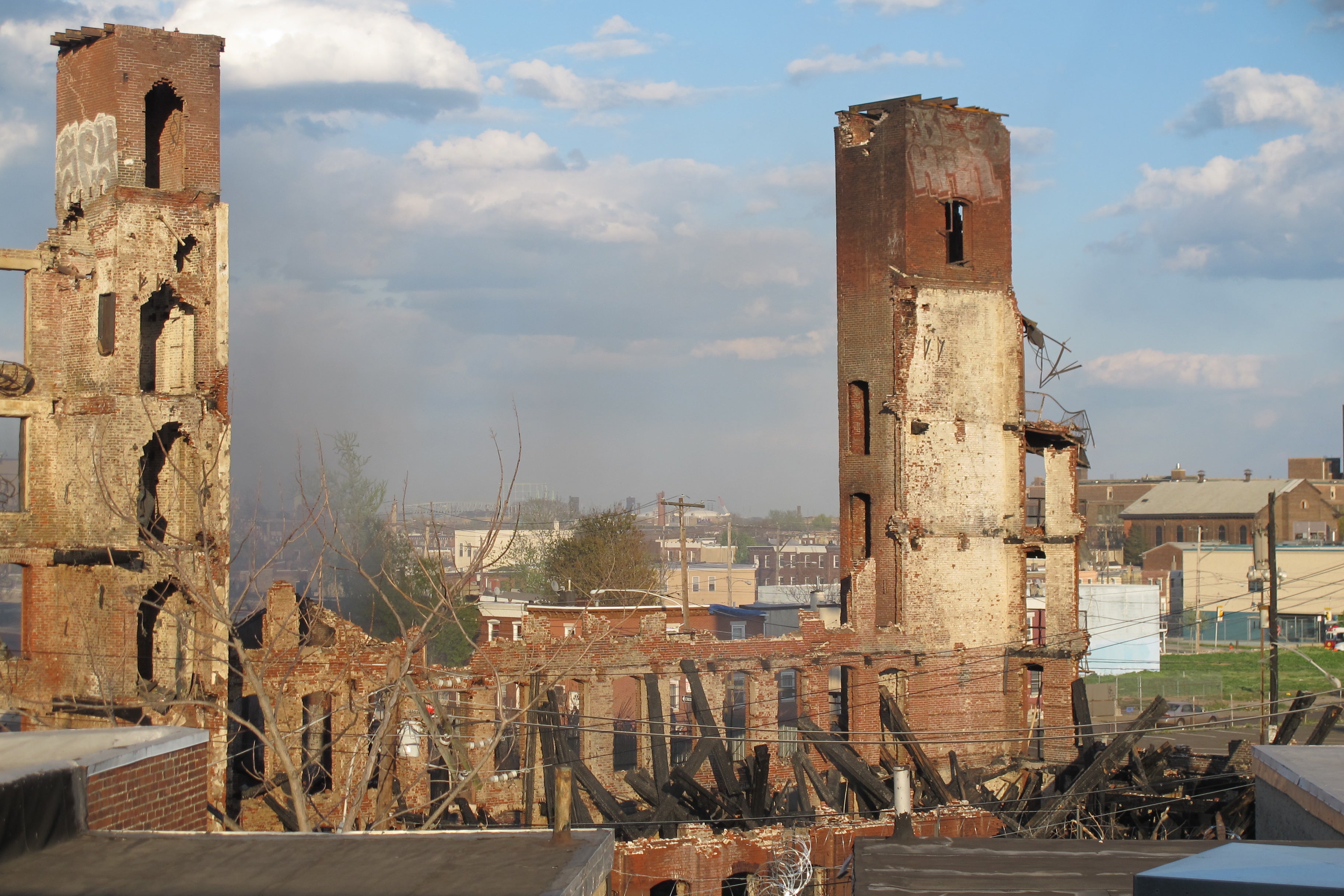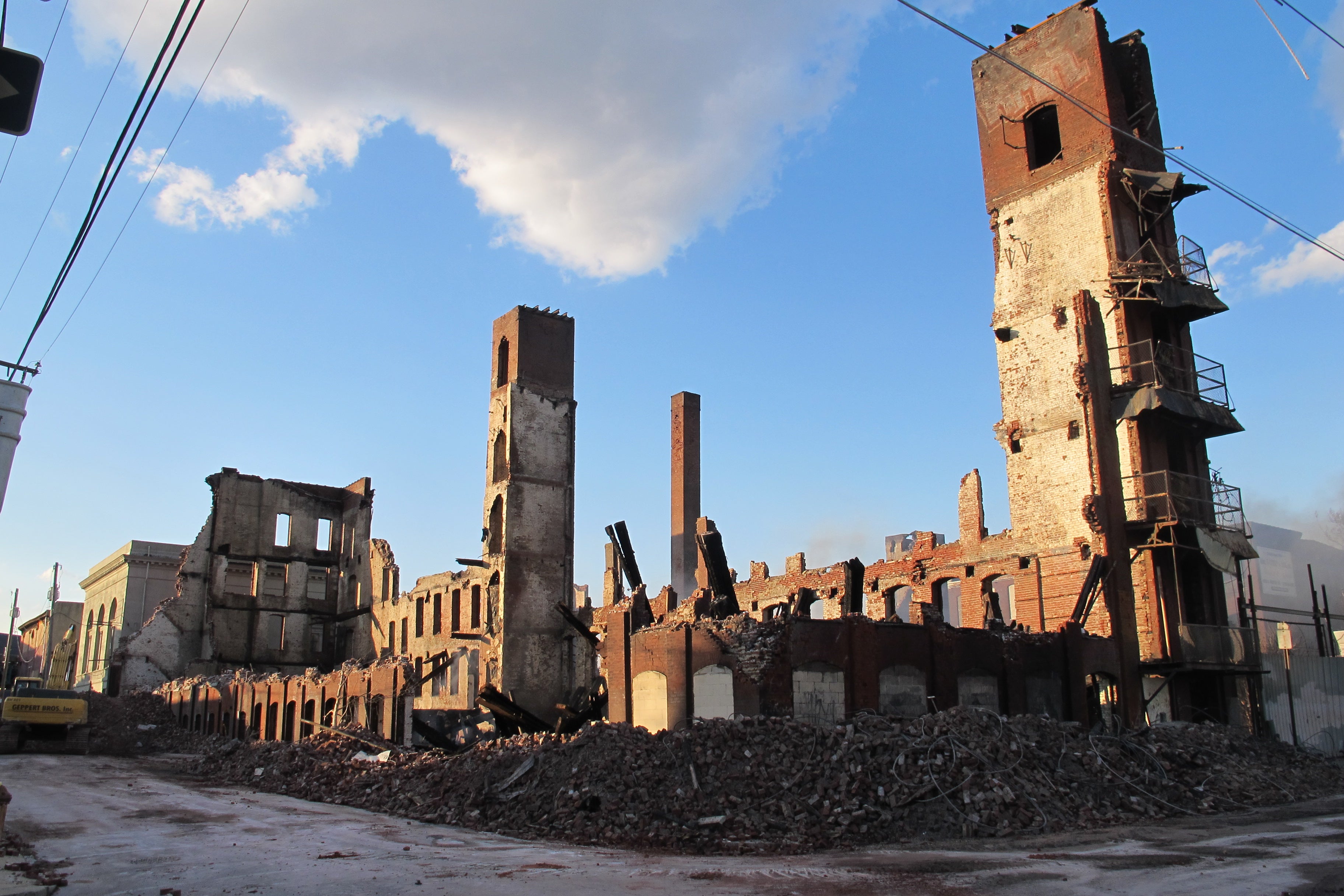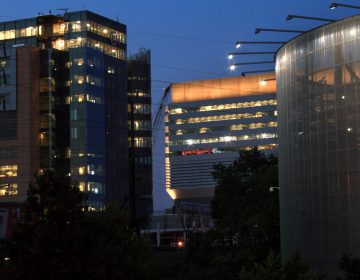Still Smoldering: Preventing the next Buck

When I stood looking at the still smoldering wreckage that was the Buck factory on Monday evening, a Jasper Street resident was looking at “The White Elephant” across the street from his house, right next to the El.
“This one’s next,” Tony said expectantly. The building is in dire shape. It’s not well-sealed, and Tony said he routinely sees pieces of stucco and brick fall on the sidewalk. Tony has come out to talk to the PECO guys, wanting to know when he will get electricity again. He is running on little sleep after being woken up by firemen pounding on the door and ordering his evacuation.
The White Elephant, a timber-framed carpet mill, and every other building like it rest heavily on the minds of East Kensington neighbors and Philadelphians alike this week. How we can prevent the next Buck? How can we make sure these buildings are sealed, their futures more secure, and our neighborhoods safer?
For the moment, the city is deflecting. Since the Buck fire, the city has been quick to point the finger at the deadbeat out-of-towner property owners, Michael and Yechial Lichtenstein. Technically, it is the owner’s responsibility to make sure a building is properly sealed, secure, and safe. But after a point it’s also the city’s problem.
When it came to the Buck building, the city followed its protocols. L&I issued violations in November, December, January and March for the building’s condition. Sheriff sale proceedings were also underway on a parallel track. Both tracks started thanks to the agitation of neighbors who were rightly worried.
“You can at least see that the City of Philadelphia is using every means that we have to bring property owners into compliance,” L&I Commissioner Fran Burns told a press conference on Monday explaining her agency’s approach.
But sometimes protocols don’t work. Deadbeat owners are unresponsive. And if the city’s getting nowhere fast, standard practice isn’t enough.
Years of vacancy and neglect lead up to tragic events like the fire that consumed the Buck Hosiery factory. Because this timeline gets so drawn out, attitudes about properties like Buck can take on an aura of complacency. It’s there. We’re working on it. Let’s see if the economy improves. But, as concerned neighbors will tell you, this problem is urgent and it’s everywhere.
Here are three near-term improvements the city can make:
1. The city should seal derelict buildings faster, especially the white elephants.
If owners do not pay attention to their buildings, the city needs to do more. The city currently uses a “three strikes” rule before further action, and in some cases that’s too many. At a press conference Monday afternoon, Deputy Mayor Everett Gillison said the city was waiting on a court order to seal the Buck property. Fran Burns acknowledged that no such order is required.
The city has police powers to ensure the health, safety, and welfare of the public. It should be less afraid to use them, particularly when it comes to large structures in very poor condition. Think Divine Lorraine. Think Buck. The type of liability – and asset – represented by the sheer scale of these buildings puts them in a special class. What if the city treated them differently than a vacant rowhouse. All violations may not be equal.
2. The city’s citation arsenal is limited, but it needs to use all its ammo.
Limited resources shouldn’t limit the city from moving in to seal buildings swiftly and slapping the owners with more fines. Put a lien on the building for the cost of the clean-and-seal work. Heap that on top of whatever back taxes, ignored water charges, and other fines have accrued. If we’re luck and the building sells, the city can collect. If the city forecloses and sells the property at sheriff’s sale, it can recoup those funds at its discretion. Maybe when some of those fines are collected, a percentage can be used to fund L&I to secure other vacants. Maybe tougher deed restrictions can be put on buildings sold at sheriff sale (or through land bank sales) to require developer action within a shorter window. The city needs to use every option it can.
Fines won’t motivate the rich careless speculators in our midst, but action could improve public safety, secure options for the future of these properties instead of consigning them to loss. Today’s liability is tomorrow’s asset.
3. Citizens need better tools to help inform the blight fight.
In many neighborhoods inspection is an every day job. A building that’s sealed one day is cracked open the next. If the city and its inspectors are spread too thin, then neighbors need better tools to help patrol and report problem properties. This is a war of attrition.
In the Buck case, neighbors were doing their part to notify the city, logging 3-1-1 complaints, talking to Philly Rising and council staffers. People shouldn’t have to live in fear of the White Elephants next door. If you’ve got one on your street, make sure it’s on the city’s radar now.
Persistence matters, and more transparency could help. Concerned neighbors and vigilant community groups should be able to follow the city’s actions on derelict buildings in real time.
PlanPhilly has been working with L&I and Azavea for nearly two years to develop a web-based interface for L&I’s data. [For more background on License to Inspect API, read this Technically Philly story from September.] By using License to Inspect, anyone will be able to look up violations or permits for any city property. Knowing when an inspector has visited (and if it’s time to go back) or when a violation is cleared can inform the fight. It’s a small step, but we hope it will put real-time information within public reach.

———
Here’s a roundup of coverage I found useful about the Buck fire’s fallout:
- Steve Conn wrote an opinion piece in today’s Inquirer about what we lose when Philadelphia’s industrial history goes up in smoke. He writes: “When the evidence of our past disappears, we lose more than buildings; we lose part of our collective sense of place. Unassuming though it was, there was not a building exactly like the Buck Hosiery building anywhere. When it went up in flames, we lost some of our future as well as some of our past.”
- What if the city could give property owners incentive to actually do something with our city’s old factories and mills instead of speculatively squatting? In his piece today on Hidden City Daily today, Nathaniel Popkin writes, “The point shouldn’t be to over-regulate contemporary uses or building adaptations, but to proactively give owners incentives to take care of them.”
- Isaiah Thompson’s Hall Monitor column in this week’s City Paper describes the city’s response to the fire. “City officials were quick on Monday to note that the city had, in fact, responded to citizens’ concerns; they should explain next what the mayor’s plan is to solve them,” Thompson urged.
- The Daily News set out looking for information about the deadbeat property owners, Michael and Yechial Lichtenstein, from neighbors near other properties they own in Philly and in Brooklyn’s Borough Park. City officials told DN “the Lichtensteins owe a stunning $385,665 in unpaid real-estate taxes from 24 of the 31 properties that they own either directly or through various companies.”
- NewsWorks’ Lizz Fiedler also talked with Kensington neighbors who are left wondering about the White Elephant and other large vacant buildings in their midst. East Kensington Neighbors Association president Jeff Carpineta told NewsWorks: “”I want to see a day where city leadership and agency leadership has the wisdom to say, you know, $10,000, $15,000, $20,000, $5,000 whatever it is, to seal these large buildings that are disasters waiting to happen.”
- Ryan Briggs revisited his earlier Hidden City Daily story in a piece about the fear and uncertainty lingering on after the fire. He leaves us with the essential question: “Buck was a latent asset for this city. If it had been treated that way it would not have become an enormous liability. There are yet thousands of other Bucks across the city. How will we treat them?”
WHYY is your source for fact-based, in-depth journalism and information. As a nonprofit organization, we rely on financial support from readers like you. Please give today.






